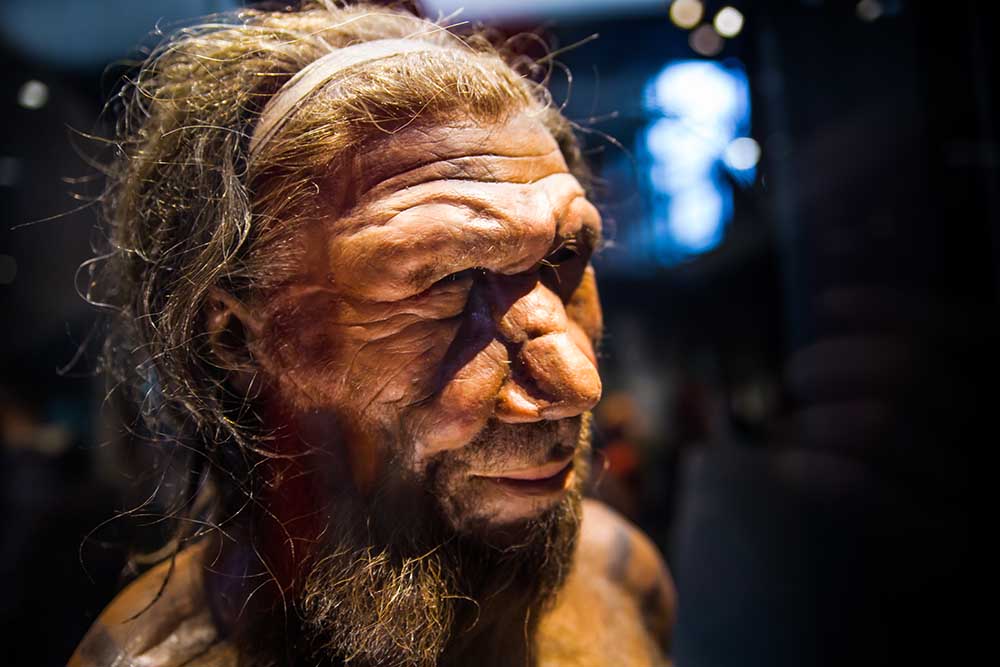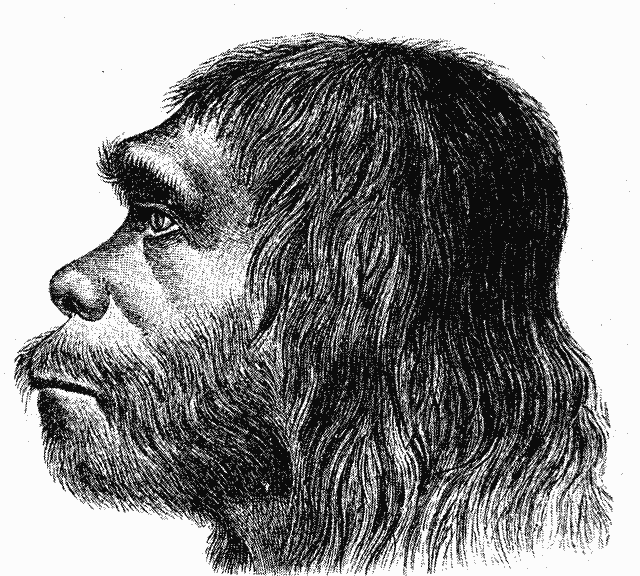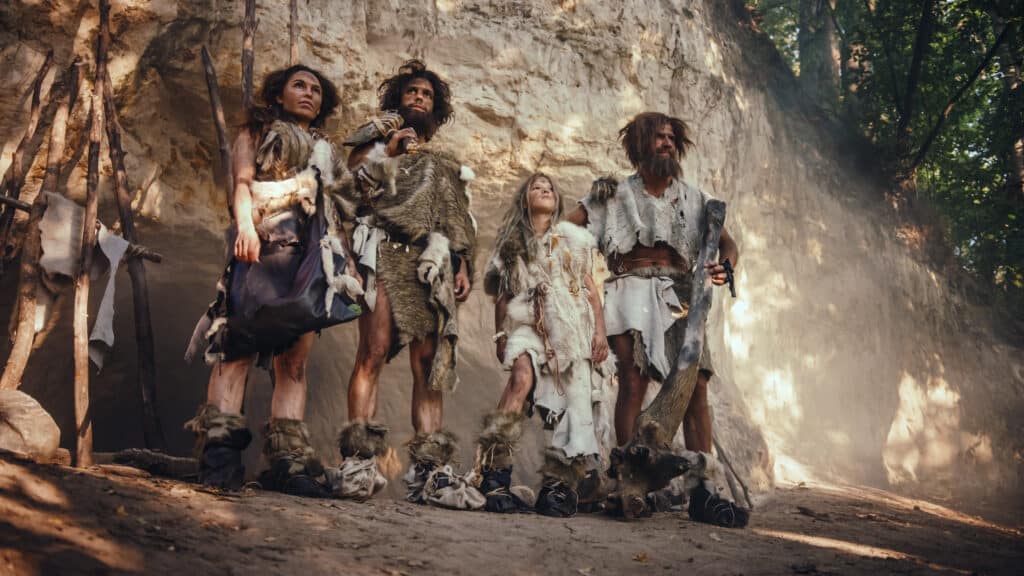Did you know that there are distinct differences between a Denisovan vs Neanderthal? You may not even know that these two very distinct human ancestors existed millions of years ago, nor how they impact our lives today. If you have always wanted to learn about Denisovans and Neanderthals, you’re in the right place.
In this article, we will discuss everything you need to know in order to tell the difference between Denisovans and Neanderthals. We will address where they lived and in what era, along with their physical descriptions and behavioral differences. Let’s get started and learn all about some of humanity’s first ancestors now!
Comparing Denisovan vs Neanderthal

| Denisovan | Neanderthal | |
|---|---|---|
| Era Alive | Lower and Middle Paleolithic | Middle to Late Pleistocene |
| Appearance | The widest and flattest skull shape; large teeth and wide pelvises. Matured slower than Neanderthals | Wide skulls and pelvises, though more aligned with modern humans. Matured at a rate close to modern humans |
| Geographical Location | Eastern Asia | Europe and Western Asia |
| Behavior | Very little is known, but it is suspected that Denisovans bred frequently with Neanderthals and lived similar lives | Complex and industrious lives with complicated social structures. Created Neanderthal and Denisovan offspring, but only in certain locations |
| Location Discovered | Denisova Cave in Russia; 2008 | Belgium in the 19th century |
Key Differences Between Denisovan vs Neanderthal

The eras in which Denisovans and Neanderthals lived differed from one another, though their time on Earth did indeed overlap.
©Esteban De Armas/Shutterstock.com
There are many key differences between the Denisovans and the Neanderthals. We know far more about Neanderthals than Denisovans, but we know enough to qualify Denisovans as separate ancient humans. The eras in which Denisovans and Neanderthals lived differed from one another, though their time on Earth did indeed overlap.
Let’s discuss what we know about these ancient beings in more detail now.
Denisovan vs Neanderthal: Appearance
While little is known about Denisovans, we can glean from fossil records that there are some physical differences in the appearance of these two ancient beings. For example, Denisovans have the widest and flattest skulls out of both Neanderthals and modern humans. The molars of the Denisovan were much larger than the molars of the Neanderthal and modern humans. Additionally, Denisovans had a much larger jaw and tooth set up compared to Neanderthals.
While it may not be something that we can entirely prove at this point in time, there are some studies that suggest Denisovans mature slower compared to Neanderthals. This leads to more physical differences between them, if you consider how these humans matured at different rates.

The molars of the Denisovan were much larger than the molars of the Neanderthal and modern humans.
©IR Stone/Shutterstock.com
Denisovan vs Neanderthal: Era Alive
While both Denisovans and Neanderthals existed during the same era, there is very little difference between these two in terms of their time on earth. However, Neanderthals lived during the Middle to Late Pleistocene Era, while Denisovans lived during the Lower and Middle Paleolithic Era. Neanderthals existed for longer than Denisovans overall.
Denisovan vs Neanderthal: Geographical Location
Similarly to the era in which these two ancient humans lived, both Denisovans and Neanderthals resided in similar geographic locations. While Neanderthals lived in Europe and Western Asia, Denisovans lived primarily in Eastern Asia. However, given the number of Denisovan and Neanderthal offsprings, we know that their territories overlapped with each other.
Denisovan vs Neanderthal: Behavior

Neanderthals lived during the Middle to Late Pleistocene Era, while Denisovans lived during the Lower and Middle Paleolithic Era.
©Hermann Schaaffhausen – Public Domain
Very little is known about the lifestyles and behaviors of the Denisovans. However, we know a great deal about the lives and struggles of the Neanderthals. It can be assumed that Denisovans lived similar lives, but we don’t have confirmation of this. Neanderthals developed complex social and industrial systems, and Denisovans likely had these as well for their own survival.
The only thing we do have confirmation of is the fact that Denisovans and Neanderthals bred and created hybrid humans during their time alive on Earth. A particular specimen named Danny has given scientists ample insight into the overlap of Denisovan and Neanderthal social structures and genetics. However, we still don’t have enough specimens to confirm very much about Denisovan behavior.
Denisovan vs Neanderthal: Location and Date Discovered
A final difference between Denisovans and Neanderthals is the locations and dates in which their remains were first discovered. Neanderthal remains were discovered in Belgium in the 19th century, whereas Denisovan remains were first discovered in the Denisova Cave in Russia as late as 2008.
We have only just begun to learn about Denisovans compared to the amount we know about Neanderthals. Perhaps we will learn much more in the coming decades about our other ancestors, the Denisovans!
Do Caucasians Have Neanderthal DNA in Them?

More recent studies with more advanced techniques indicate that all races have small traces of Neanderthal DNA in them.
©iStock.com/gorodenkoff
With all of the discoveries being made on human ancestry through DNA testing, it’s natural to wonder if some part of you might be Neanderthal.
Genetic studies since 2010 have shown that modern humans and Neanderthals mixed and had babies together after genomes taken from bone samples of Hominims were sequenced. The studies indicated that Asians, Americans, and Europeans have up to 2% of Neanderthal genes in them. The original studies suggested that Africans did not have Neanderthal genes in them at all.
More recent data has caused some researchers at Princeton to change their tune, now believing that Africans also have DNA from Neanderthals. This was discovered based on a new computational method of analysis.
If this is the case, it could indicate that a long-held theory that all mankind originated from Africa and spread outward in a mass human migration 60,000 to 80,000 years ago could be incorrect. They now think a migration out of Africa may have occurred 200,000 years ago, of which some interbred with Neanderthals, then migrated back to Africa, bringing Neanderthal genes with them.
The photo featured at the top of this post is © IR Stone/Shutterstock.com
Thank you for reading! Have some feedback for us? Contact the AZ Animals editorial team.






